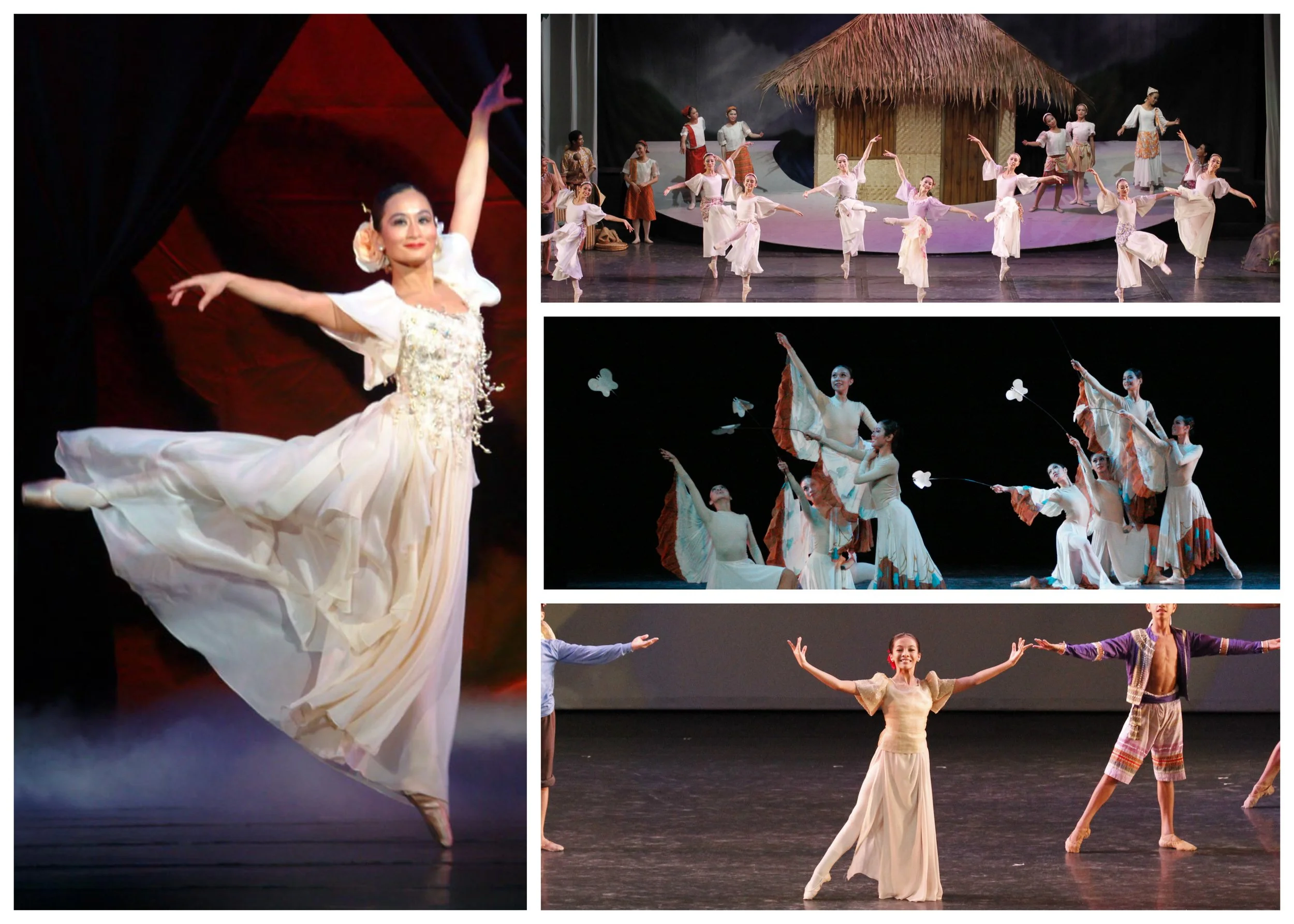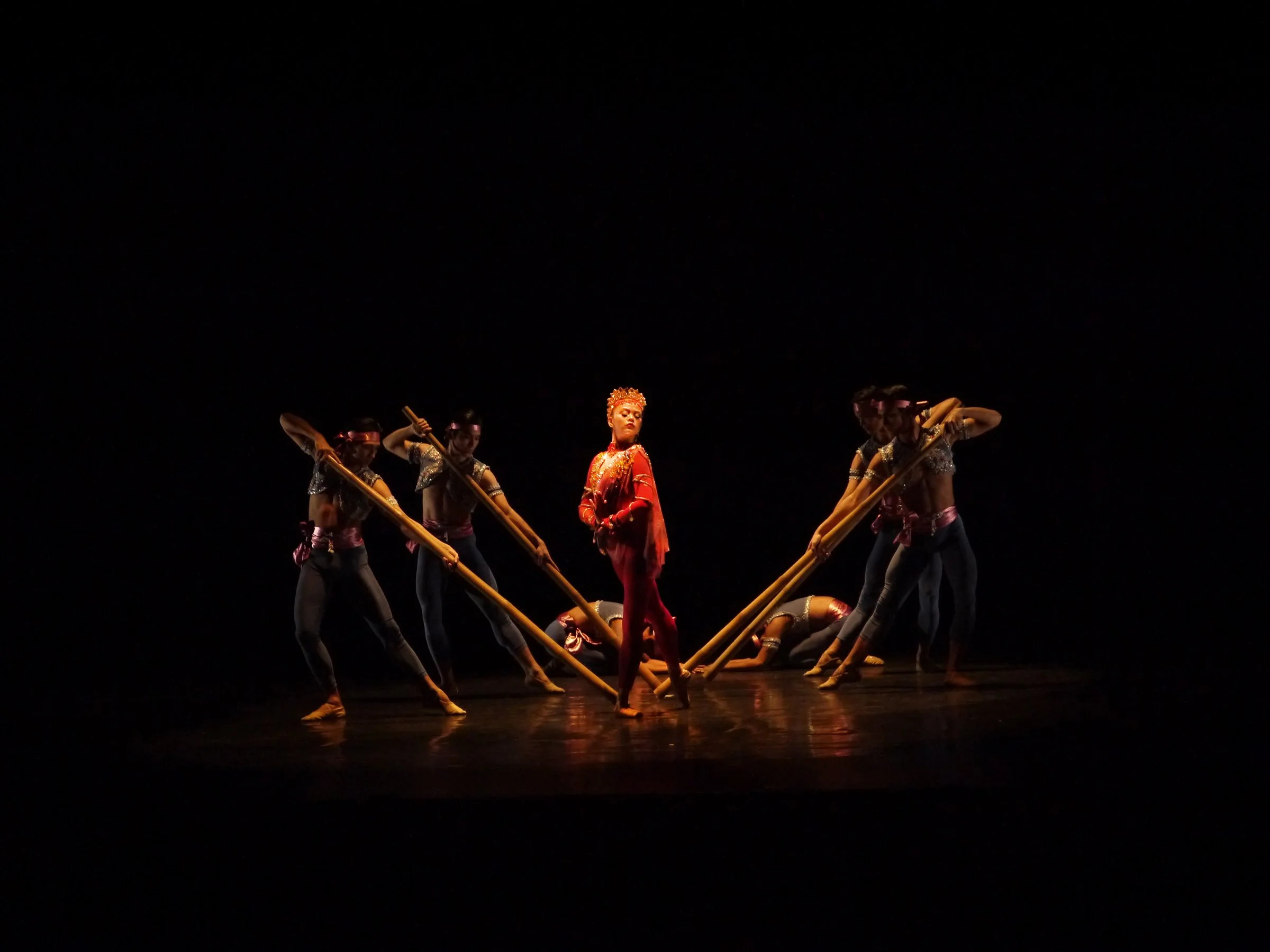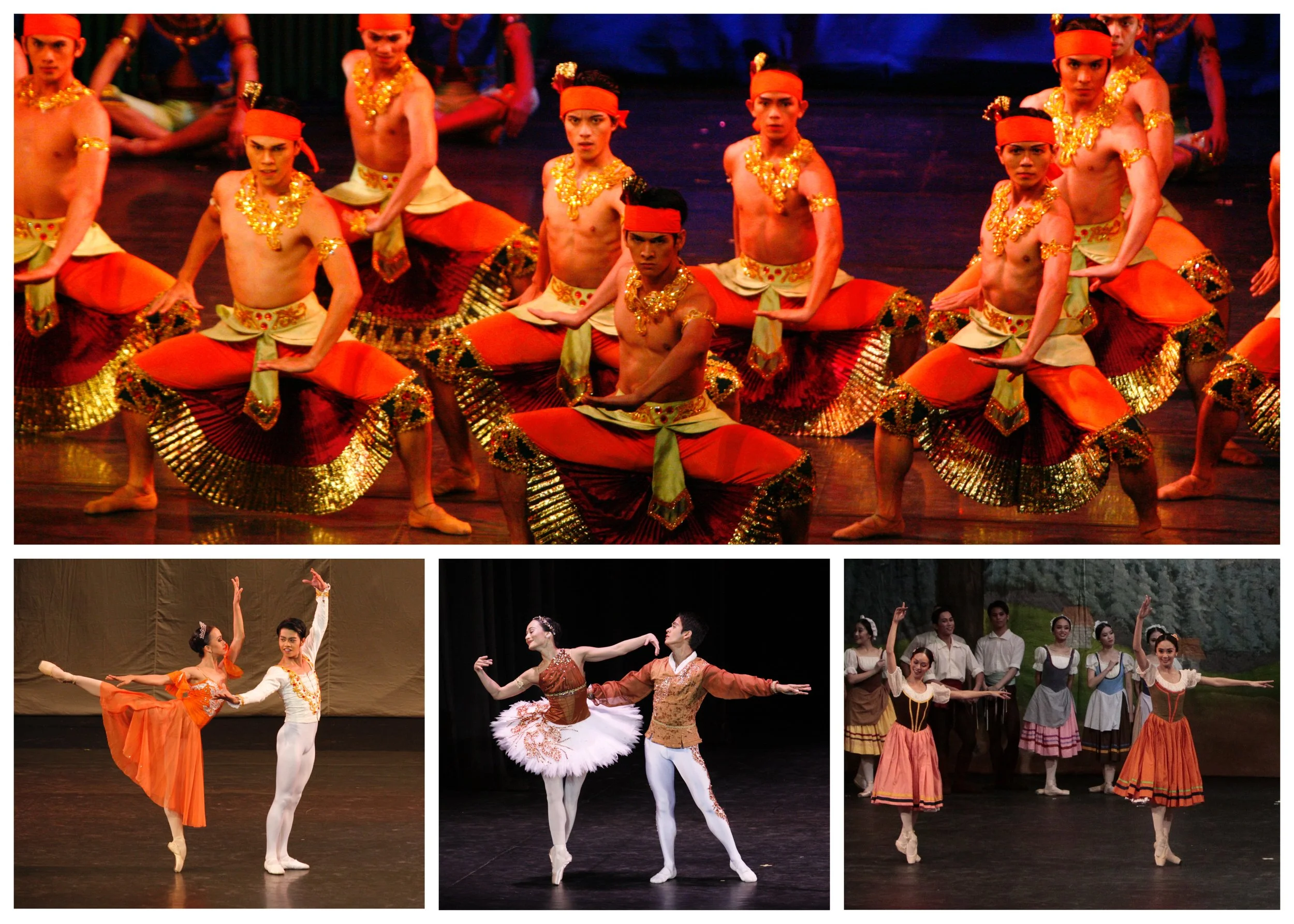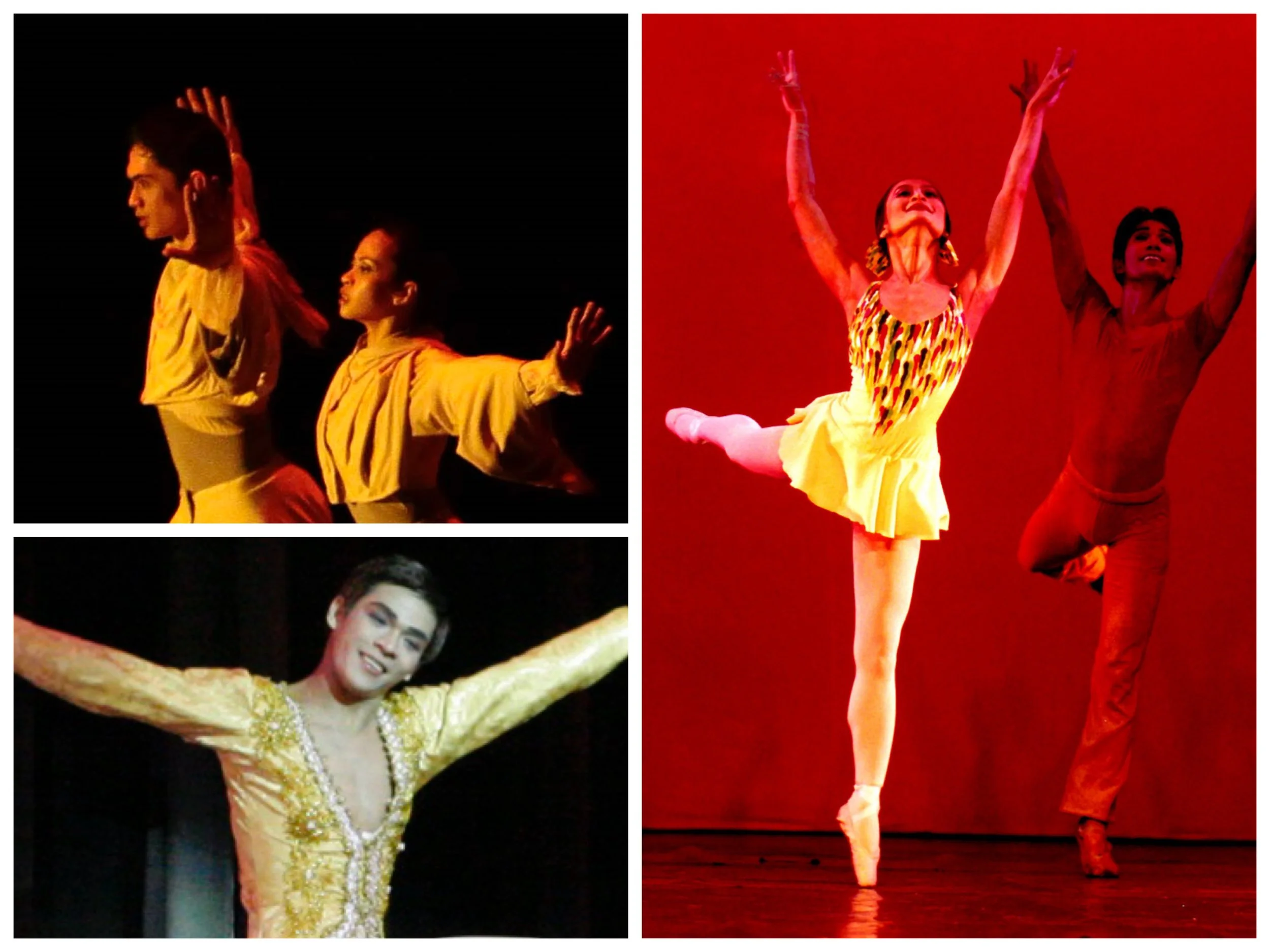Ballet Manila in Full Color: Cream of the crop
Ballet Manila has showcased a rich palette of hues in its productions over the years. Now, the company’s true colors are revealed! Gathering photographs from the Ballet Manila Archives, we present the vibrant and the somber, the heavenly to the earthy, in a series of virtual exhibitions – one shade at a time.
Photos by Ocs Alvarez

In Alamat: Si Sibol at si Gunaw (2012), the warrior-king and poet Kapuy (Nazer Salgado) falls in love with the goddess Luningning (Lisa Macuja-Elizalde), nurturer of nature, and brings her back from Dream Mountain to his palace to ask her to be his wife. Though reluctant about leaving her own world, Luningning eventually relents and their wedding takes place, with the couple clad in complementing cream-colored finery highlighted by sparkling brown lace and ornaments.
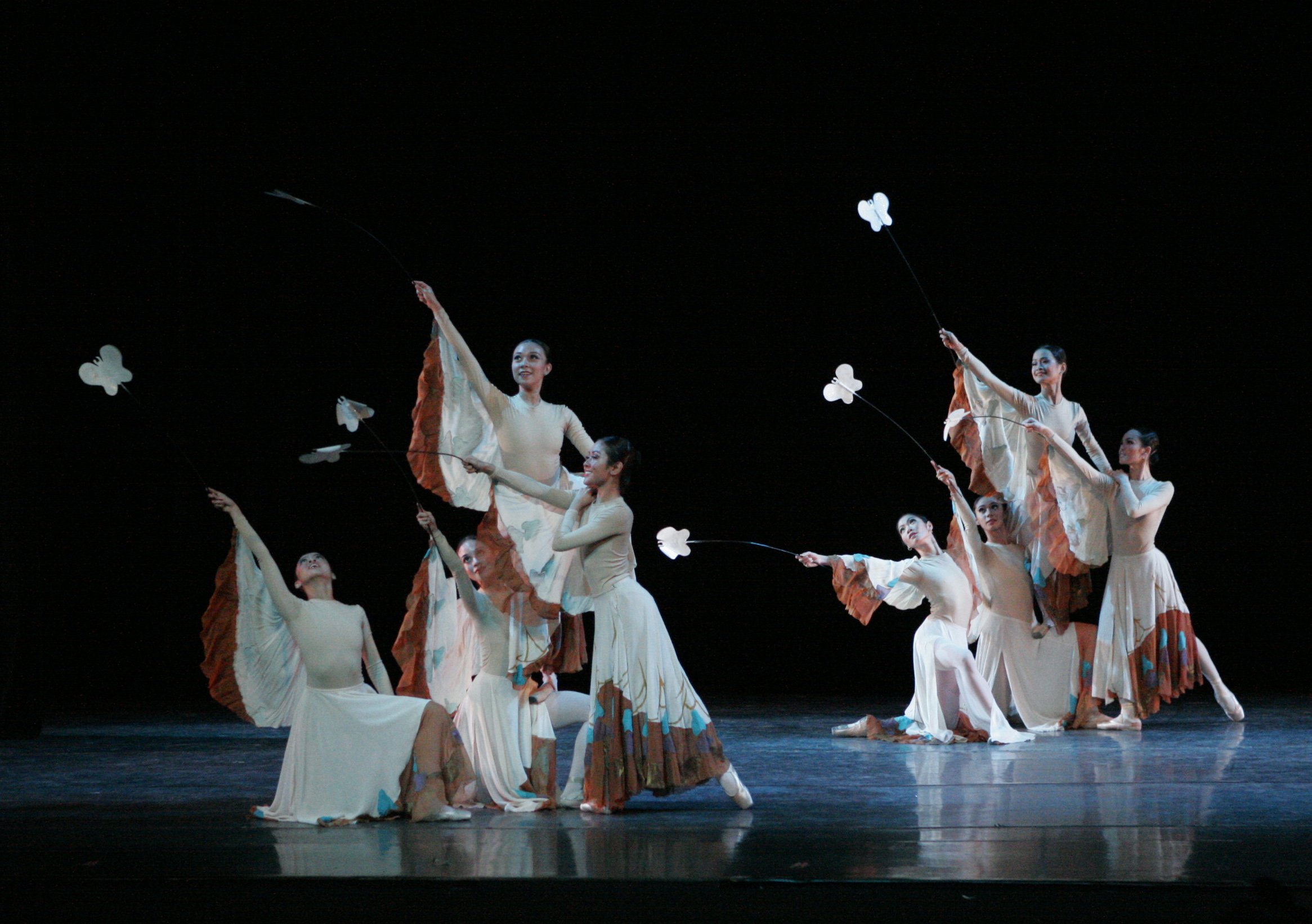
“Youthful, abstract, modern and light but dramatic” is how choreographer David Campos Cantero describes his work, Velvet Wings, which was staged anew by Ballet Manila in 2005. Channeling the beauty and fragility of butterflies, the dancers wear dresses in delicate ivory accented by earth-color tones of brown and rust.
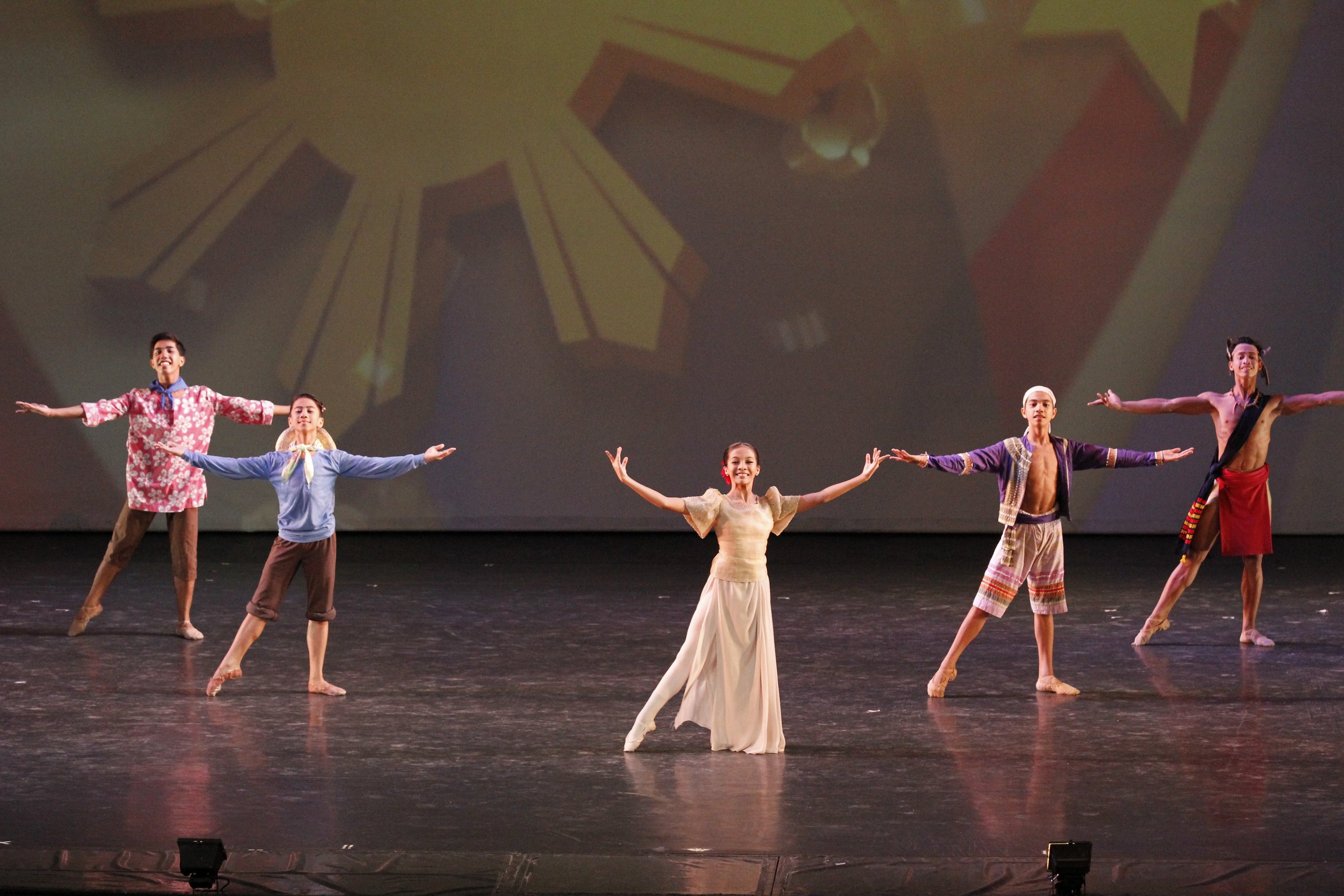
In her cream-and-beige Filipiniana attire, Nicole Barroso leads fellow Ballet Manila School scholars and Project Ballet Futures scholars in the rousing kick-off to the production Kay Ganda ng Ating Musika (2014). The opening number, choreographed by Osias Barroso, fittingly uses the music of Ryan Cayabyab which inspired the show’s title.
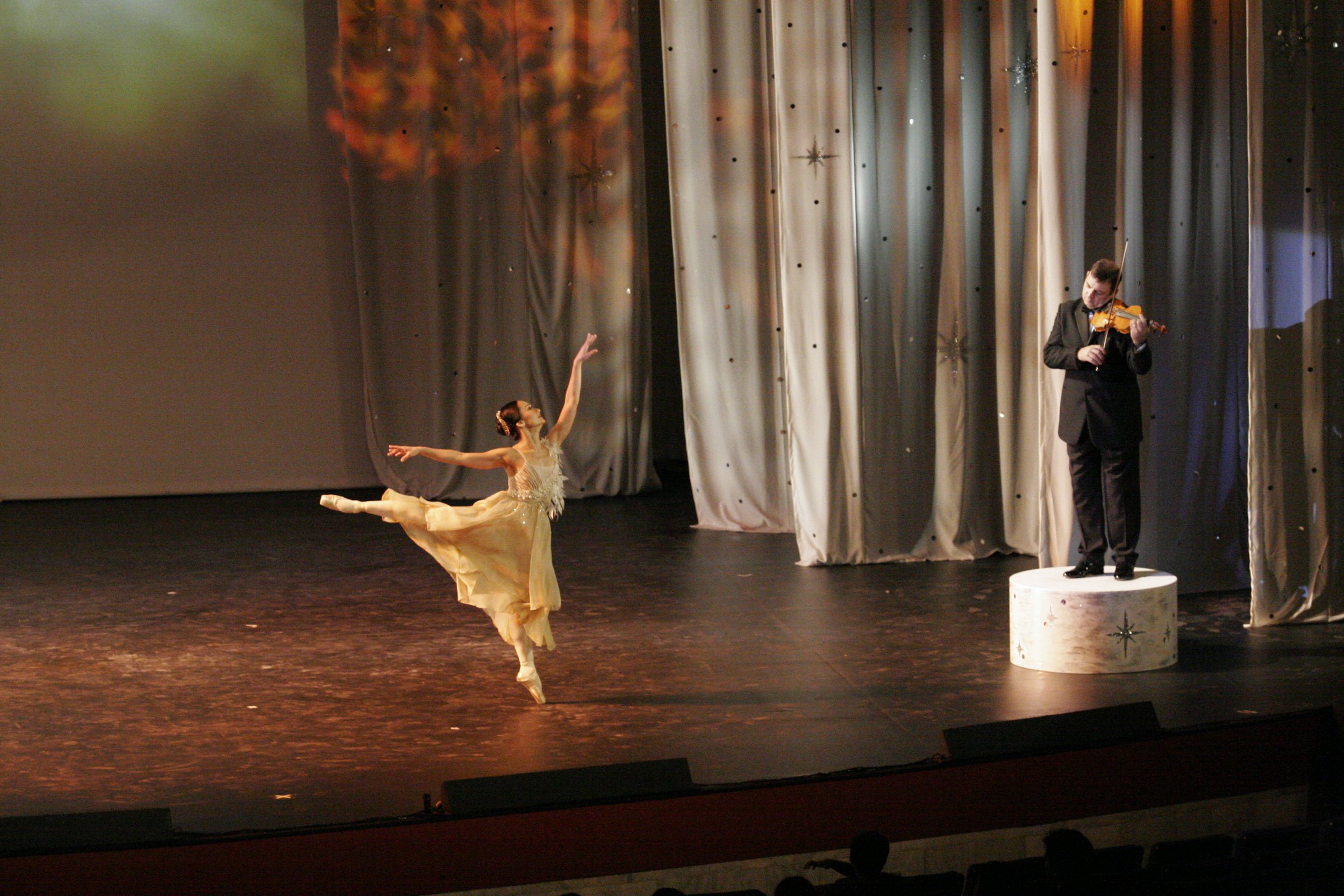
To celebrate her silver anniversary as a professional ballerina, counting from her two seasons spent with the Kirov Ballet in 1984 and 1985, Lisa Macuja-Elizalde prepared a special production dubbed Lisa@25 in 2009. In the program segment dubbed “The Mission,” Lisa – luminous in ecru – dances a choreography by Osias Barroso set to a medley of popular Filipino and English songs, with music performed by violinist Robert Atchison.
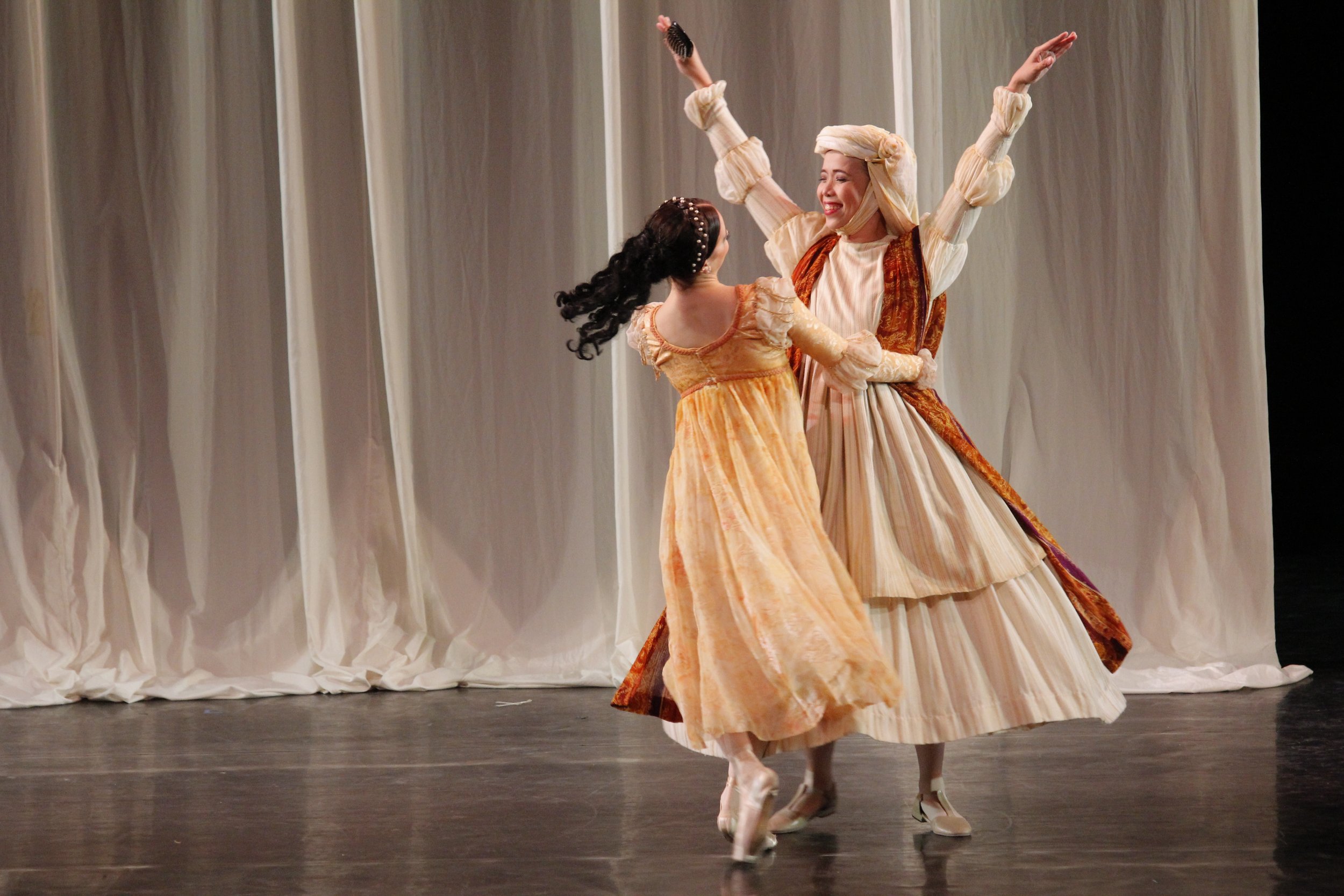
The Nurse (Eileen Lopez), a maternal figure and confidant to Juliet (Katherine Barkman) in Romeo and Juliet (2015), wears an outfit the color of cream that plays off quite nicely opposite the tan-tinged dress of her ward. The light, uncomplicated tones of their clothes and the backdrop underscore the youthful innocence of Juliet who is yet to meet Romeo.
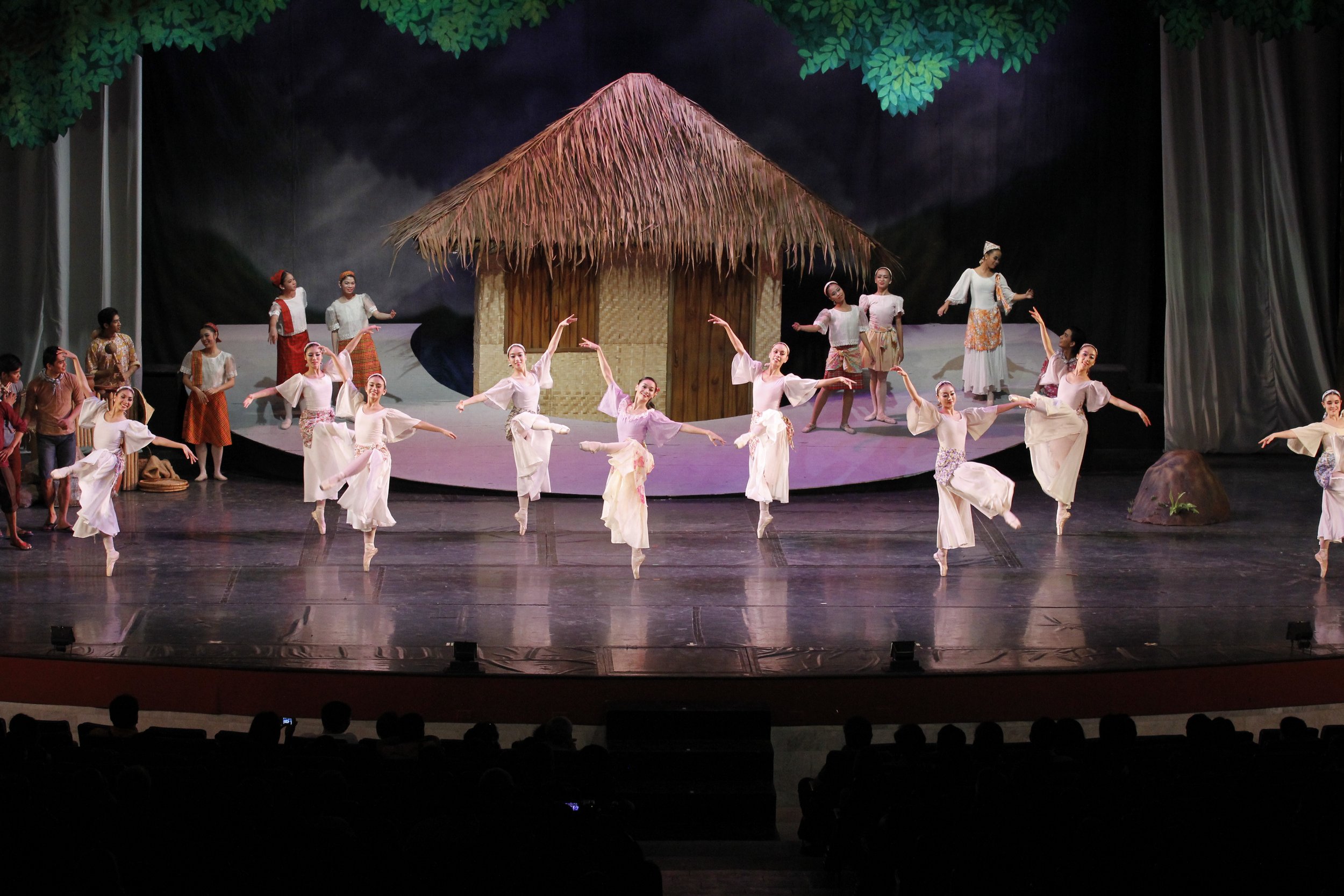
Anting-Anting, the third tale featured in Tatlo Pang Kuwento ni Lola Basyang (2013), is set in a barrio where the people lead idyllic lives – until the coward Huwan disrupts it in his quest for an amulet to make himself brave. In this scene, village women enjoy a bit of dancing in traditional Philippine-inspired attire. While Meling (Dawna Reign Mangahas) wears a lavender top, her saya (skirt) as well as the dresses of the other girls are in a shade of cream paired with floral tapis (overskirt).
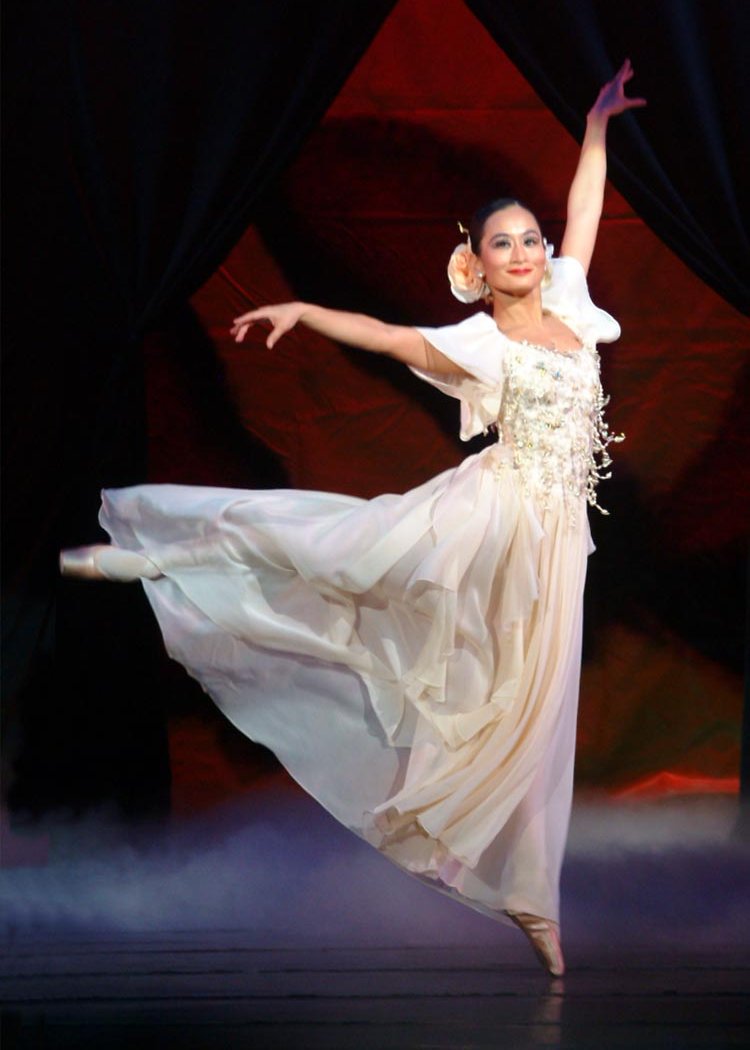
Tony Fabella’s Dalagang Pilipina, part of the repertoire of OPM at OPB (2003), is a ballet piece based on a fashion show with lithe ramp models oozing with glamour. Ballet Manila ballerinas – including then principal dancer Lisa Macuja-Elizalde in a flowy cream confection – show off the creations of top fashion designer Auggie Cordero as a tribute to the contemporary Filipina.

